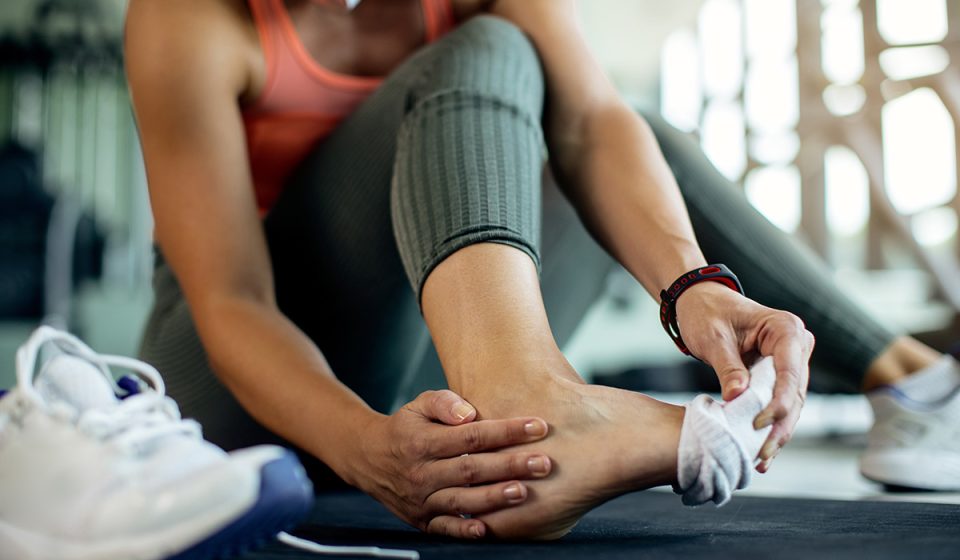
How Some Sports Injuries Can Cause Arthritis at an Early Age
We often think of arthritis as a condition that mainly affects older adults — something that comes with decades of wear and tear. However, that’s not always the case. In reality, sports injuries can trigger early-onset arthritis, sometimes starting in your 20s or 30s. If you’ve ever experienced a serious injury on the field, court, or track, understanding the link between trauma and joint degeneration is key to protecting your long-term mobility and athletic lifestyle.
Table Of Content
⚠️ What Is Post-Traumatic Arthritis?

Post-traumatic arthritis (PTA) is a form of arthritis that develops after a joint injury. It behaves very similarly to osteoarthritis, the more common, age-related form, by causing:
- Pain
- Stiffness
- Swelling
- Reduced range of motion
What makes post-traumatic arthritis particularly tricky is that symptoms don’t always appear immediately. It can show up months or even years after the initial injury, making it a hidden consequence for many active people who thought they had fully recovered. Over time, the damaged joint structures — including cartilage, ligaments, and bone — can deteriorate, leading to chronic joint dysfunction.
🧠 Why Younger Athletes Are at Higher Risk
Many athletes bounce back quickly after injuries, especially when they are young and resilient. But deep inside the joint, lingering damage often remains. Here’s why young athletes face an increased risk for post-traumatic arthritis:
- Limited cartilage healing: Unlike muscles or skin, cartilage has very little blood supply, which means it doesn’t heal well after injury.
- Higher re-injury rates: Returning to sports before full healing or playing intensely can put joints at risk for further trauma.
- Under-treatment and incomplete rehab: Some athletes stop physical therapy too early, once pain subsides, without fully rebuilding strength, stability, and joint mechanics.
- Overuse and repetitive stress: Even after recovery, heavy use of the injured joint — especially in high-impact sports — can speed up cartilage breakdown.
Young, active bodies can mask joint issues for a while, but cumulative damage builds up, setting the stage for arthritis much earlier than expected.
🚑 Common Sports Injuries That Can Lead to Arthritis
| Injury Type | How It Can Lead to Arthritis |
|---|---|
| ACL or Meniscus Tear (Knee) | Disrupts joint mechanics → uneven cartilage wear → arthritis |
| Ankle Sprains/Fractures | Repeated trauma weakens cartilage and joint lining |
| Shoulder Dislocations | Damages cartilage and ligaments → leads to instability and joint wear |
| Hip Labral Tears | Alters joint movement → increased stress on cartilage |
| Joint Fractures | Bone surface damage causes abnormal pressure on cartilage |
🚨 Signs You May Be Developing Arthritis Early
Paying close attention to your body after an injury is crucial. Some early warning signs that could indicate arthritis is developing include:
- Persistent joint stiffness, especially noticeable in the morning or after periods of inactivity.
- Clicking, grinding, or locking sensations when moving the joint.
- Swelling that doesn’t completely resolve, even long after the injury.
- Pain during or after exercise that wasn’t there before or feels different from typical soreness.
- Reduced range of motion, making daily activities or athletic movements feel restricted.
If you notice any of these signs, it’s important to act early rather than wait for things to worsen.
✅ How to Reduce Your Risk

Even if you’ve had a significant sports injury, there are effective ways to protect your joints and delay or prevent arthritis:
- Rehab thoroughly: Don’t quit physical therapy once pain decreases. Full rehab restores strength, stability, balance, and mobility — all vital to joint health.
- Strengthen supporting muscles: Strong muscles around the joint help absorb shock and reduce direct pressure on cartilage.
- Maintain a healthy weight: Even a small amount of excess weight increases joint stress, especially on weight-bearing joints like the knees, hips, and ankles.
- Cross-train: Alternate between activities (like swimming, cycling, and strength training) to avoid repetitive stress on the same joints.
- Listen to your body: Pain, swelling, or instability are not normal signs of progress. Respect your limits and seek evaluation if symptoms persist.
Preventive care and smart training adjustments can help you extend the life of your joints significantly.
🏥 When to See a Specialist
If you’re still experiencing joint pain, stiffness, or swelling long after an injury — or if it’s impacting your performance or daily activities — it’s time to see an orthopedic specialist or sports medicine doctor. Early diagnosis and intervention can:
- Slow or halt arthritis progression
- Provide targeted treatments (like physical therapy, medications, or injections)
- Offer guidance on safe activity modifications
- Reduce the long-term need for more invasive treatments like joint replacement
Remember, early action can preserve your mobility for decades to come.
🏁 Final Thoughts
An old injury doesn’t have to define your future. With the right knowledge, proactive rehabilitation, and attentive care, you can stay active, strong, and pain-free well into later life. Understanding the risk of post-traumatic arthritis empowers you to make smarter choices now — so you can keep doing the sports and activities you love, without letting arthritis take the lead.
Stay informed. Stay mobile. Stay in the game.


